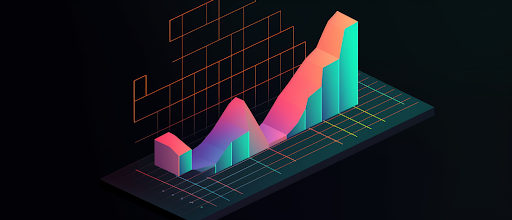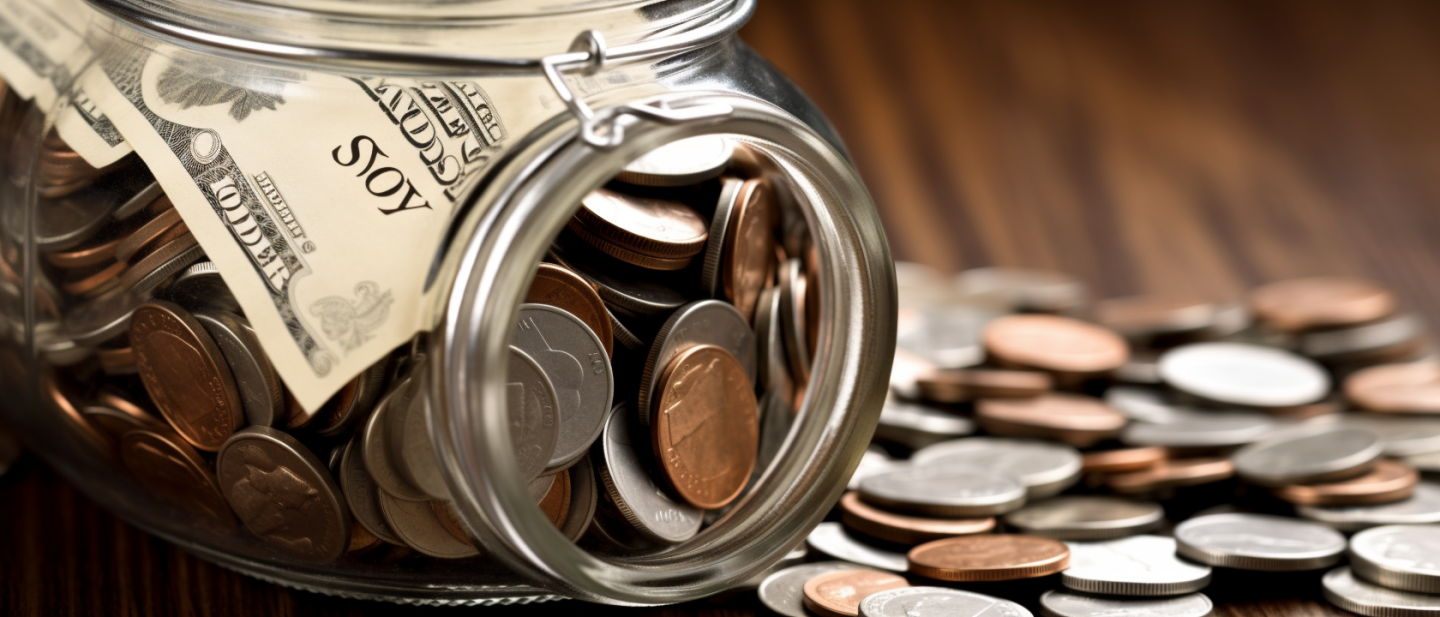
- High-yield savings accounts are bank accounts with higher interest rates than traditional savings accounts.
- These accounts are FDIC-insured, which means that the government guarantees the funds in the account up to $250,000.
- High-yield savings accounts typically have no fees and require low minimum deposits.
- The higher interest rates on these accounts mean that your money can grow faster over time.
What Is A High-Yield Savings Account?
If you hold a checking account at your local bank, chances are you also have a savings account. Many individuals deposit their money in a savings account to earn interest and grow their money over time.
However, not all savings accounts offer high returns, which is where high-yield savings accounts come in. While traditional savings accounts have a national average return of 0.35%, high-yield savings accounts offer much higher interest earnings on savings.
Despite the recent drop in savings rates due to the current economic climate, high-yield savings accounts can still earn you over 12 times more money than regular savings accounts.
How Can High-Yield Savings Accounts Help You Grow Your Money?
Looking to boost your financial growth? Opting for a high-yield savings account could be your best bet. Here’s how this type of account can lead you to bigger savings:
- Generous Interest Rates: One key advantage of high-yield savings accounts is their generous interest rates. It often surpasses those of standard savings accounts. Interest rates represent the percentage a bank offers as compensation for holding your money in their account.
- Compound Interest: Utilizing a high-yield savings account is beneficial in multiple ways. Compound interest includes the interest gained on both the principal and interest accumulated over time. In high-yield savings accounts, the interest gained gets added to the principal.
- Low Fees: Frequently, fees can cause a dent in your savings, but a high-yield savings account’s minimal fees can help increase your money.
- FDIC Insurance: The Federal Deposit Insurance Corporation, an independent agency of the U.S. government, provides protection to account holders in the event of bank failure. Each account is insured up to $250,000 per depositor.
- Easy Access to Funds: Access to funds is also crucial in growing your wealth. High-yield savings accounts offer easy access through online banking, mobile apps, and ATMs. This feature lets you move money in and out of your account quickly. Traditional savings accounts, on the other hand, may limit access and hinder your ability to maximize earnings.
The Power Of Compound Interest
Let’s take a look at a traditional savings account with the national average of 0.35% APY, or annual percentage yield, and a high-yield savings account with 3% APY with an initial investment of $10,000 and an annual compound frequency over 10 years:
| Year | Traditional Savings Account (0.35% APY) | High-Yield Savings Account (3.00% APY) |
|---|---|---|
| 1 | $10,035.00 | $10,300.00 |
| 2 | $10,070.12 | $10,609.00 |
| 3 | $10,105.37 | $10,927.27 |
| 4 | $10,140.74 | $11,255.09 |
| 5 | $10,176.23 | $11,592.74 |
| 6 | $10,211.85 | $11,940.52 |
| 7 | $10,247.59 | $12,298.74 |
| 8 | $10,283.45 | $12,667.70 |
| 9 | $10,319.45 | $13,047.73 |
| 10 | $10,355.56 | $13,439.16 |
As you can see, the high-yield savings account earns significantly more interest over the 10-year period, resulting in a balance of $13,439.16 compared to the traditional savings account’s balance of $10,355.56.
This illustrates the power of compound interest and why it’s important to consider interest rates when choosing a savings account.
What Are The Downsides Of A High-Yield Savings Account?
There are some disadvantages to be aware of before opening a high-yields savings account:
- High balance requirements: Many high-yield savings accounts require a minimum balance to earn the advertised APY.
- Fees: Some accounts charge monthly maintenance fees, withdrawal fees, or other fees that can eat into your savings.
- Limited access: Some high-yield savings accounts restrict the number of withdrawals you can make each month.
- Interest rate fluctuations: Interest rates on high-yield savings accounts can fluctuate and may not always remain high.
Strategies For Maximizing Your Returns From A High-Yield Savings Account
Maximizing the potential of a high-yield savings account involves setting achievable savings goals and automating savings contributions. Regularly reviewing and adjusting your savings strategy will help you stay on track to reach your financial goals.
Reinvesting earned interest is also a smart strategy for growing your savings over time. With these tactics, you can make the most of your high-yield savings account and watch your money grow.
How To Open A High-Yield Savings Account
If you have access to a competitive high-yield savings account through your current bank, opening the account is easy. You can simply log in to your online banking portal and apply for the account. You don’t need to provide personal information, since the bank has already verified your identity. It’s a similar process to opening a savings account.
If you’re opening a high-yield savings account at a new institution, the process will be slightly more involved. However, it should still be straightforward, as most high-yield savings accounts can be opened online.
You can easily set aside about 15 minutes to complete the electronic application. You’ll need your driver’s license, Social Security number, and primary bank account information to complete the application.
Want to know more? Take a look at our take on the best high-yield savings accounts.
Frequently Asked Questions (FAQs)
-
What Is The Difference Between A High-Yield Savings Account And A Traditional Savings Account?
A high-yield savings account typically offers a higher interest rate than a traditional savings account. They may also have fewer fees and more flexible withdrawal options.
-
Are High-Yield Savings Accounts Safe?
High-yield savings accounts are typically FDIC-insured up to $250,000, which means that your money is protected if the bank or credit union fails.
-
Can I Withdraw Money From My High-Yield Savings Account At Any Time?
Yes, most high-yield savings accounts allow you to withdraw money at any time without penalty. However, some accounts may limit the number of withdrawals you can make per month.
-
Are There Any Fees Associated With High-Yield Savings Accounts?
Some high-yield savings accounts may have fees, such as monthly maintenance fees or fees for excessive withdrawals. It’s important to read the terms and conditions carefully before opening an account.
-
How Often Is Interest Paid On A High-Yield Savings Account?
Interest on a high-yield savings account is typically paid monthly or quarterly, depending on the bank or credit union.
-
What Should I Look For In A High-Yield Savings Account?
These are the features to look for in a high-yield savings account:
• A competitive interest rate, preferably with no or low balance requirements
• No regular fees for maintaining the account
• Easy transfers to and from linked accounts, with no or low fees










